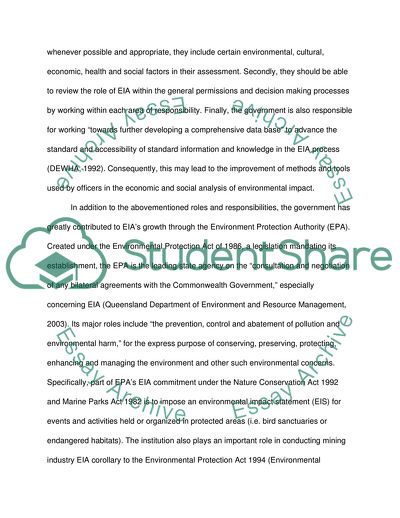Cite this document
(Environmental Impact Assessment in Australia Term Paper Example | Topics and Well Written Essays - 1500 words, n.d.)
Environmental Impact Assessment in Australia Term Paper Example | Topics and Well Written Essays - 1500 words. https://studentshare.org/environmental-studies/1741642-review-paper-of-eia-in-australia
Environmental Impact Assessment in Australia Term Paper Example | Topics and Well Written Essays - 1500 words. https://studentshare.org/environmental-studies/1741642-review-paper-of-eia-in-australia
(Environmental Impact Assessment in Australia Term Paper Example | Topics and Well Written Essays - 1500 Words)
Environmental Impact Assessment in Australia Term Paper Example | Topics and Well Written Essays - 1500 Words. https://studentshare.org/environmental-studies/1741642-review-paper-of-eia-in-australia.
Environmental Impact Assessment in Australia Term Paper Example | Topics and Well Written Essays - 1500 Words. https://studentshare.org/environmental-studies/1741642-review-paper-of-eia-in-australia.
“Environmental Impact Assessment in Australia Term Paper Example | Topics and Well Written Essays - 1500 Words”. https://studentshare.org/environmental-studies/1741642-review-paper-of-eia-in-australia.


